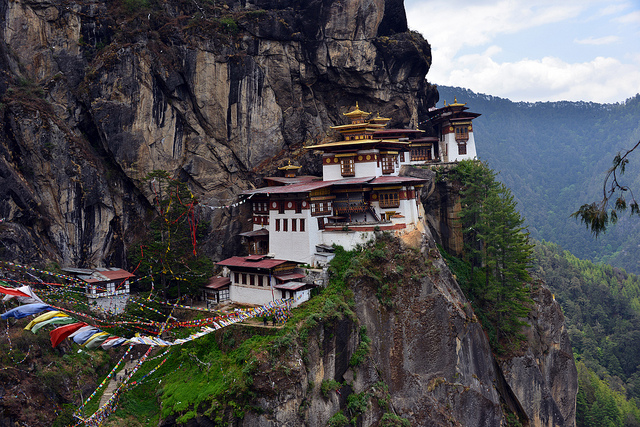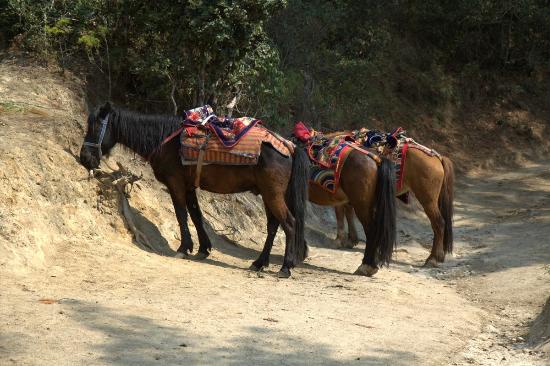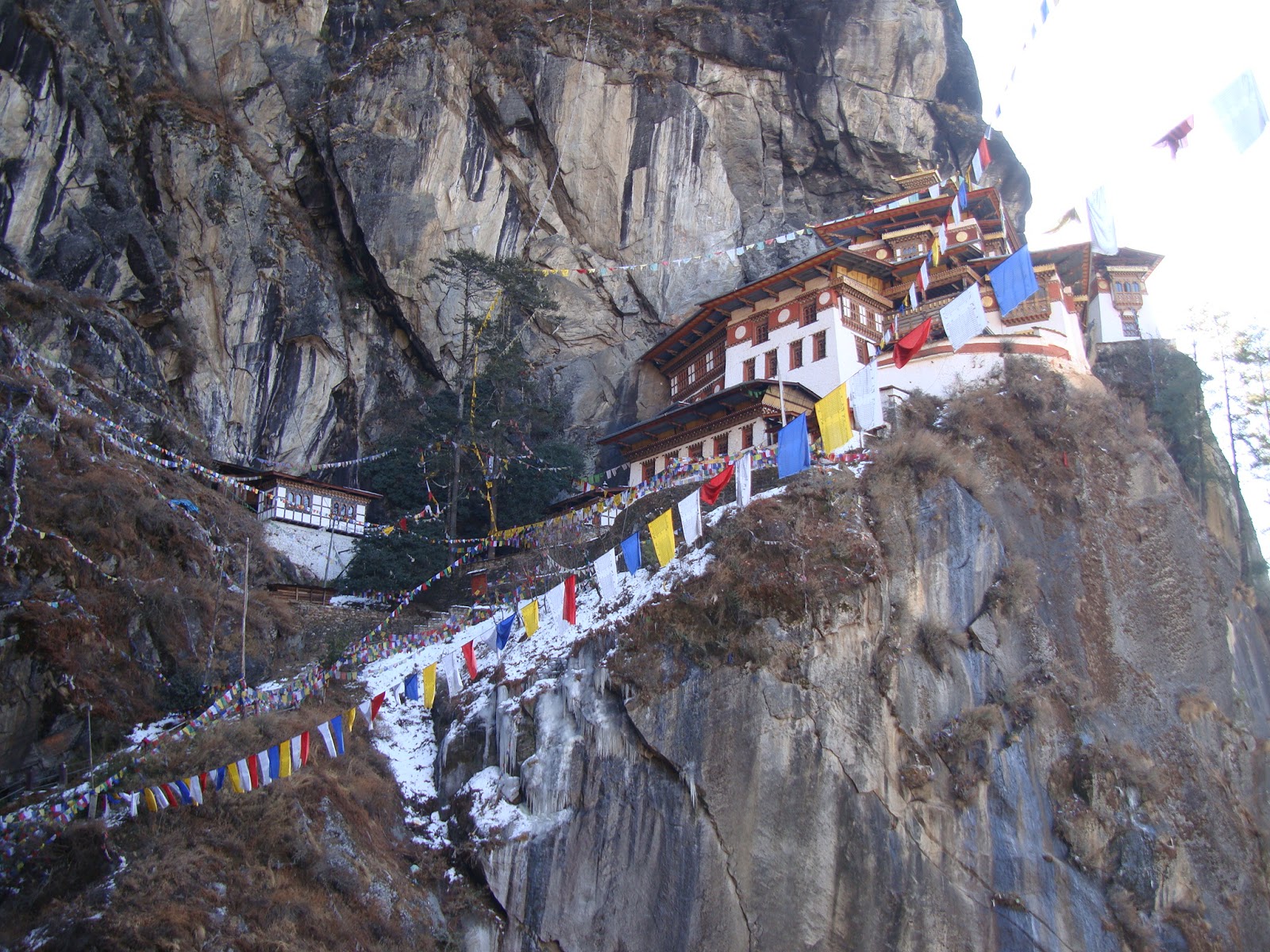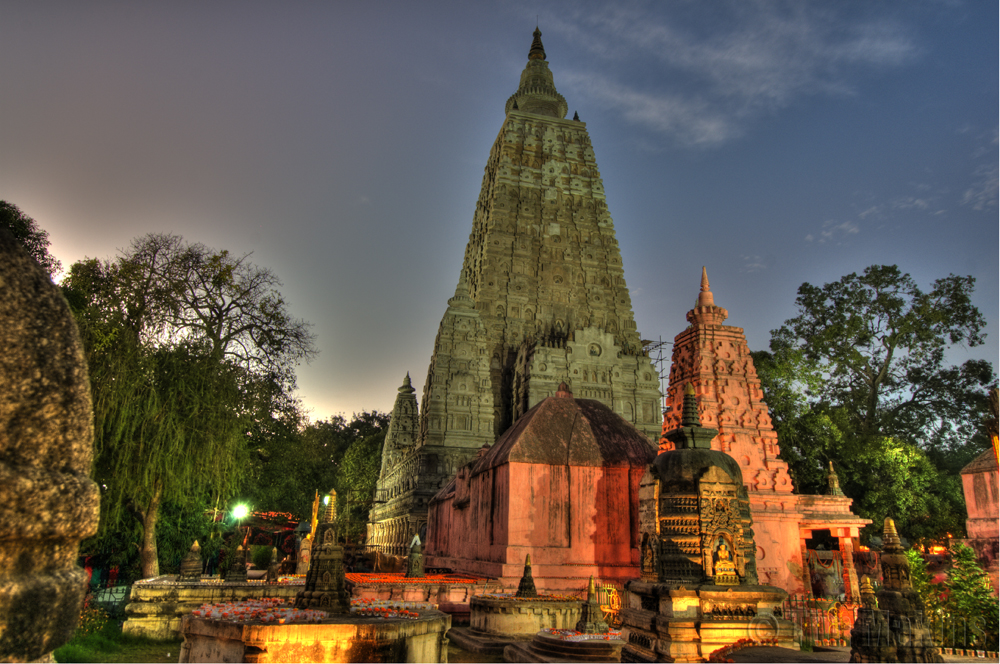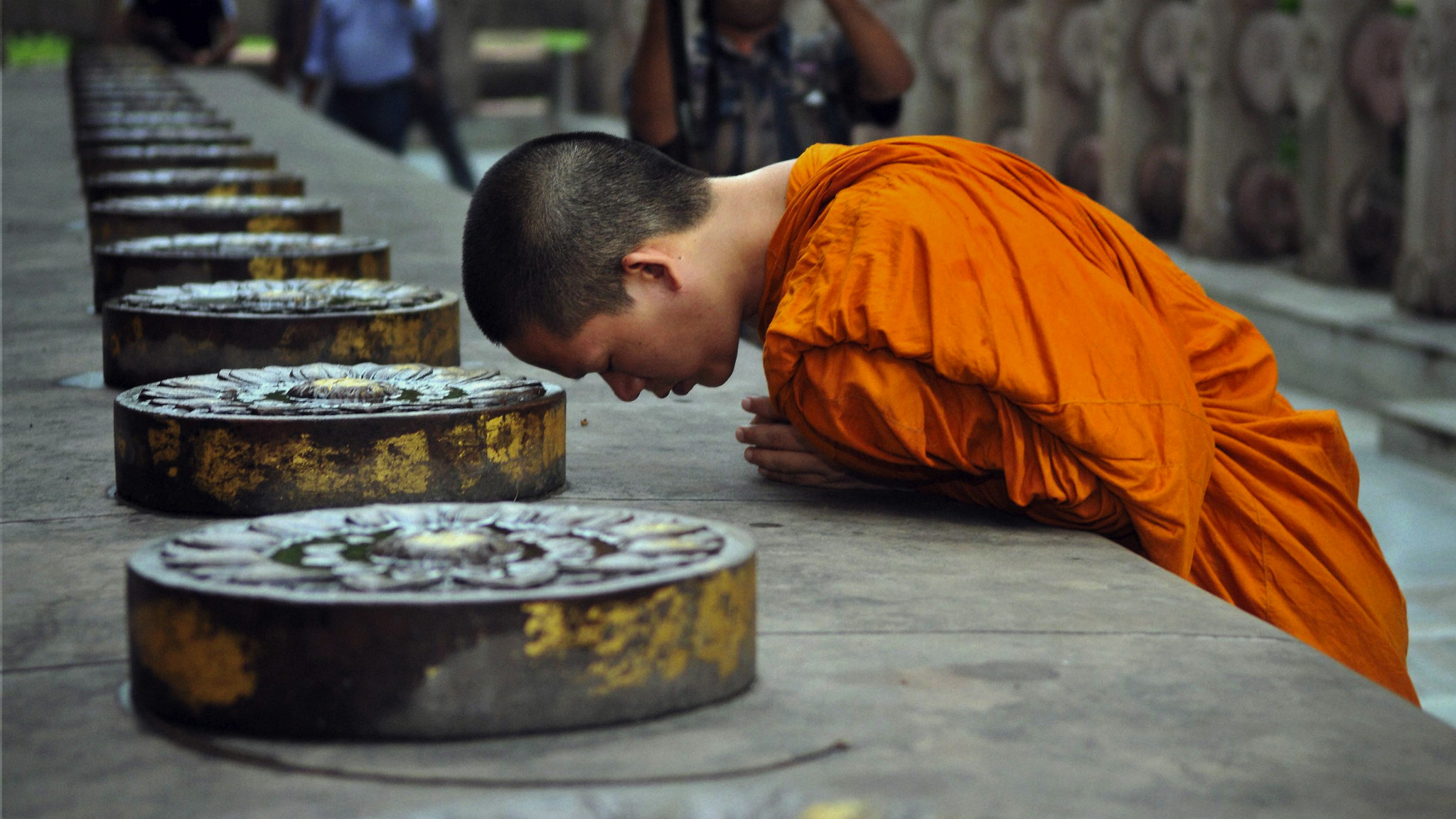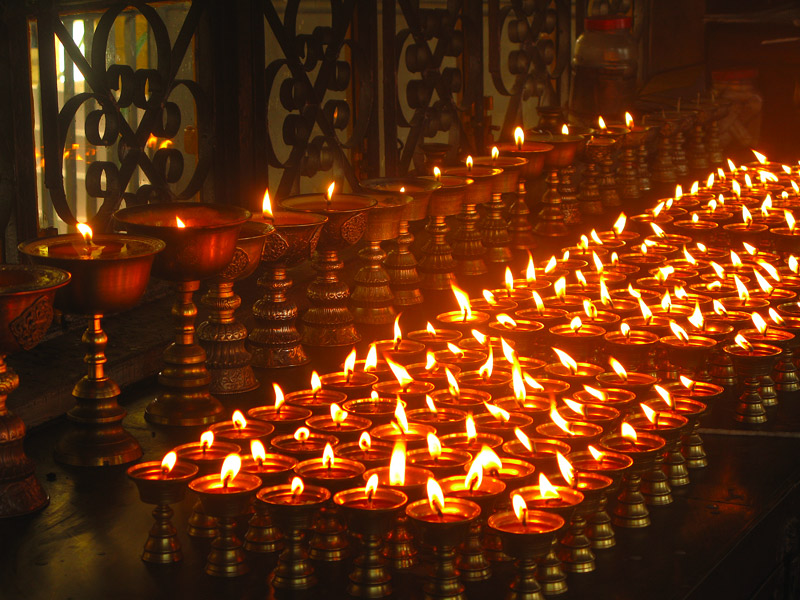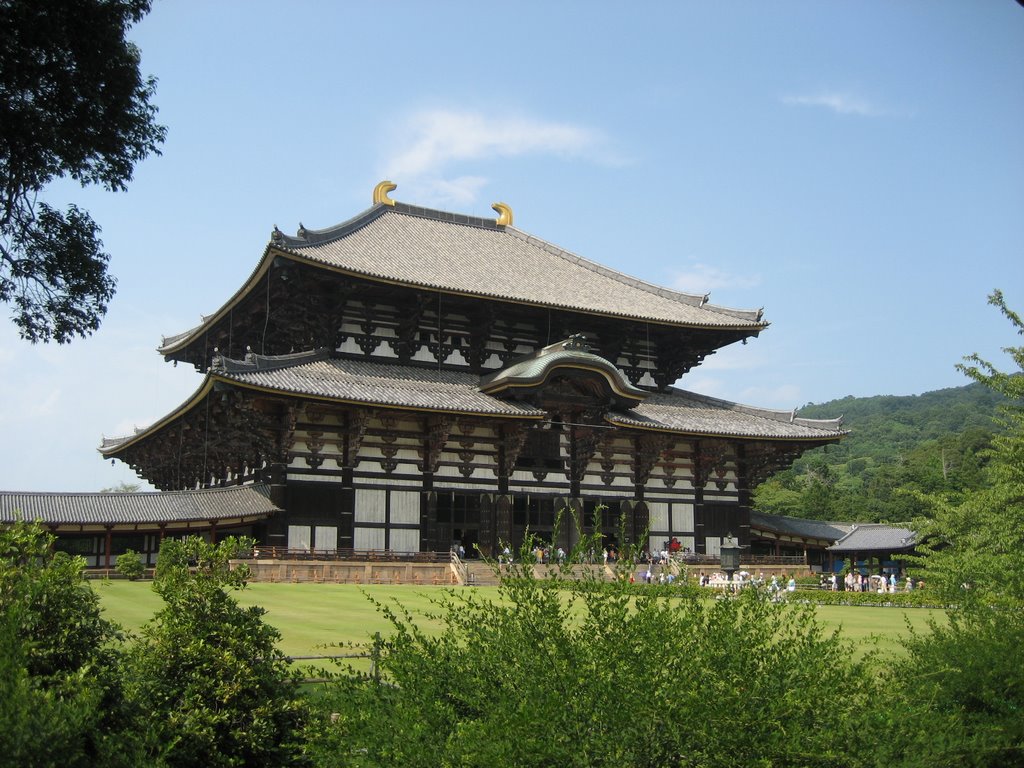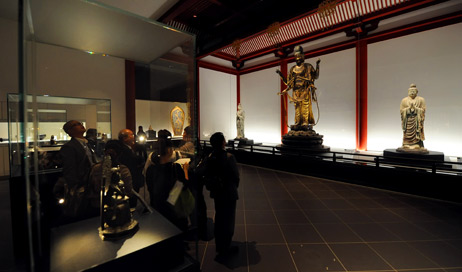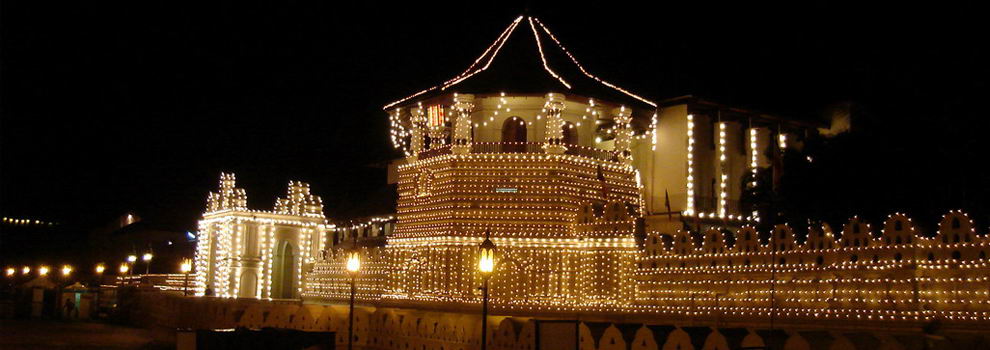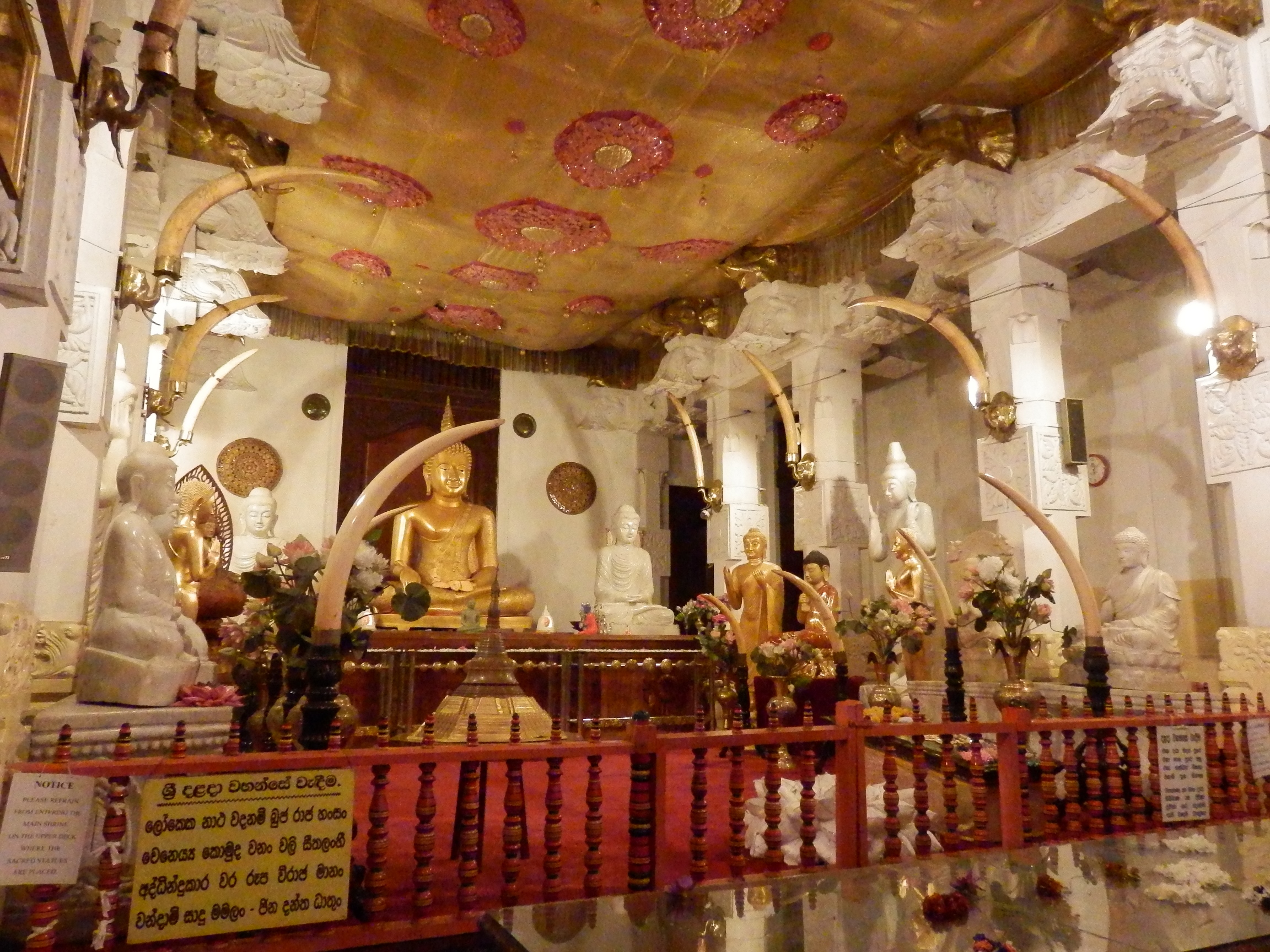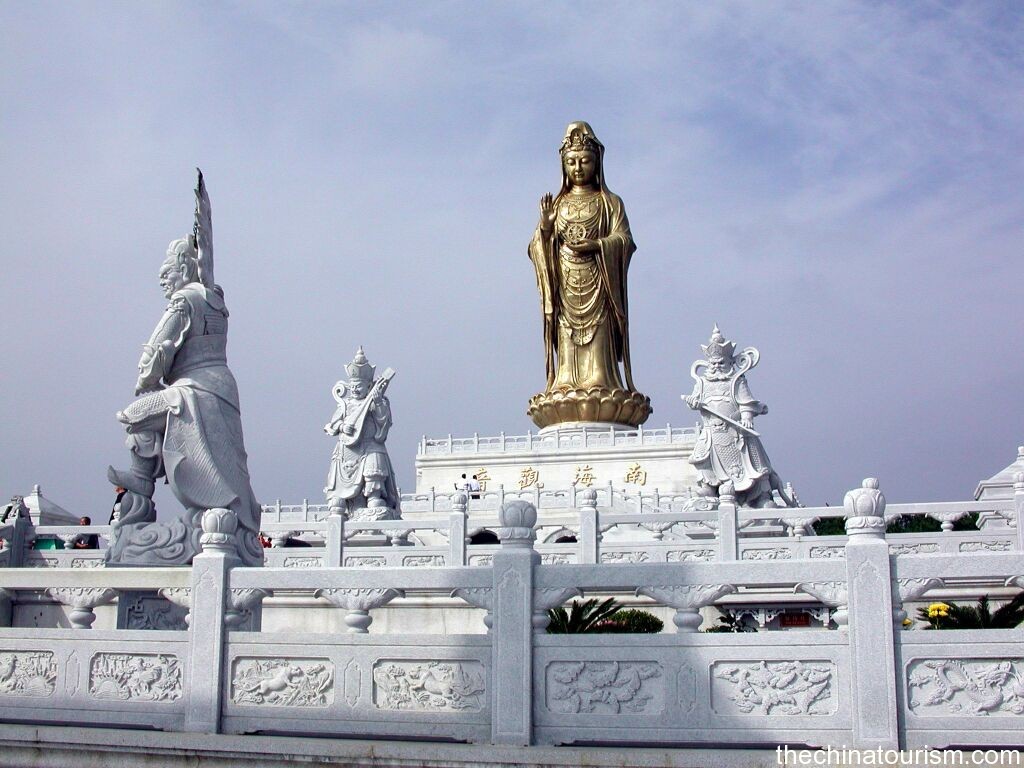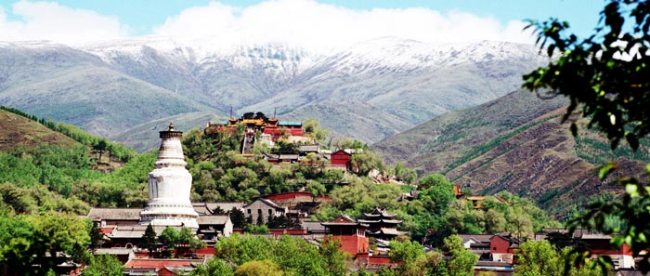As Buddhists around the world celebrate the Buddha’s birth, let’s explore some of the most beautiful and culturally significant temples across Asia, places of pilgrimage and prayer for Buddhists worldwide.
Taktsang Monastery in Bhutan
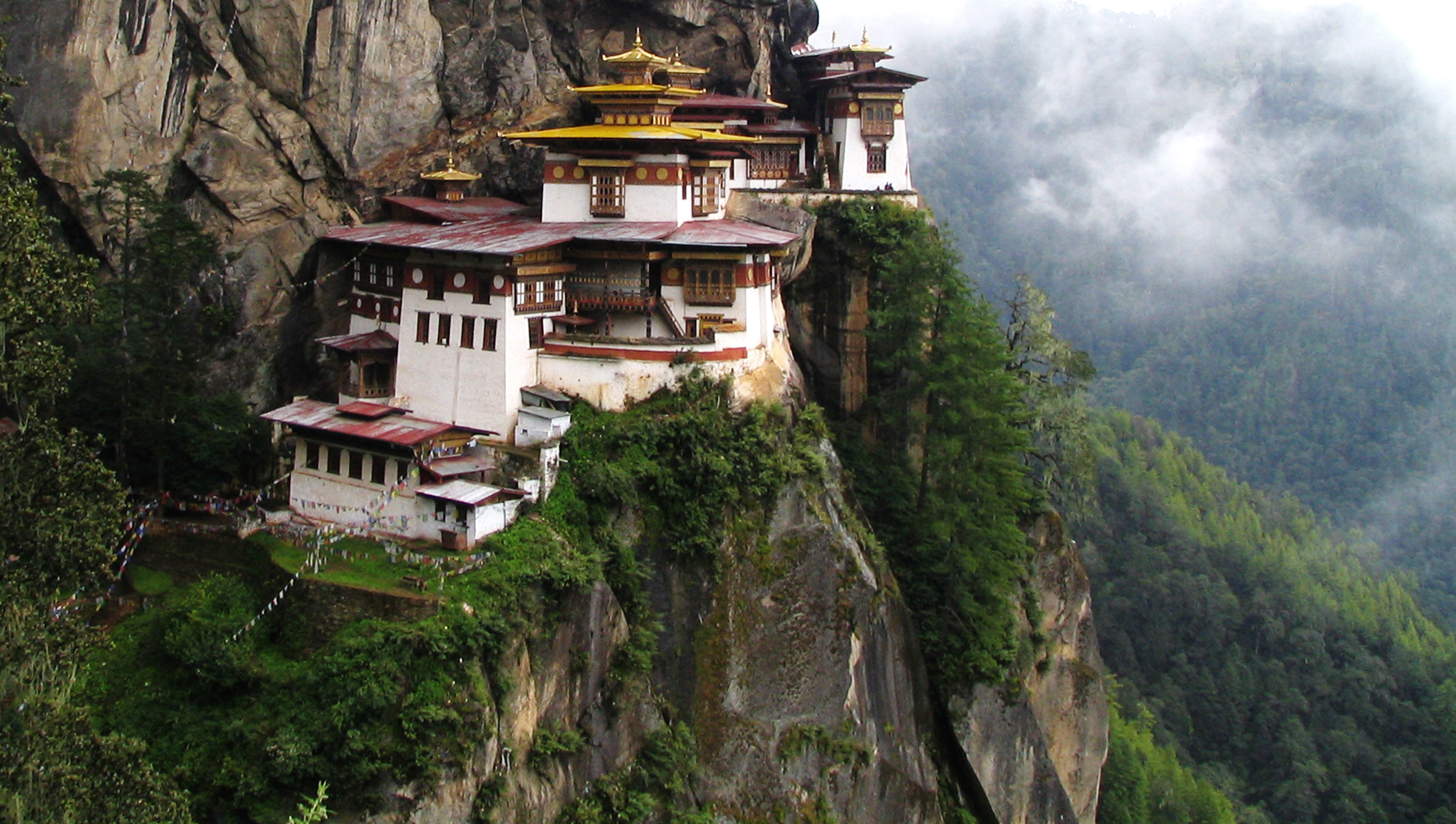
Sitting on the edge of the cliff 900 metres above the bottom of the valley is Taktsang Monastery in Bhutan, also known as Tiger’s Nest.
Because going up to the temple is a dangerous business, the government has restricted tourist entering the temple with the company of tour guides, who will arrange a pony to ride you up the slope.
Image credits: http://bit.ly/1j8Xhu0
However, even with the comfortable pony ride, before stepping into the entrance of the temple, you’re challenged to a 850 steps that you have to climb before you get to appreciate this beauty up close.
Since Tiger’s Nest is a pilgrimage site, lines of colourful flags strung by the people who’ve come and offer their prayers has added a unnatural beauty to the site.
Bringing your belongings into this sacred land is forbidden and if you’re caught by the security guards stationed around the temples, you might get frisked out even before you can start enjoying appreciating the building.
Mahabodhi Temple in India
Image credits: http://bit.ly/1owiZx1
As the name suggests, “Great Awakening Temple” is where Siddhartha Gautama, the Buddha is said to gain enlightenment. Mahabodhi Temple is cited as one of the UNESCO Word Heritage Sites that is located in Bodhi Gaya (in the Gaya district) of Bihar State in India.
Image credits: http://bit.ly/1bthWW0
Image credits: http://bit.ly/1bthWW0
Image credits: blogs.ft.com/
Image credits: http://bit.ly/1jhKb3d
Every year during Vesak Day, Mahabodhi Temple will be swamped by Buddhists monks who come here to offer prayers.
On July 2013, the complex experienced a series of bombing attack injuring 5 people, including two Buddhist monks.
Fortunately, the Bodhi Tree (believed to be where Gautama Buddha attained enlightenment) and the temple itself were undamaged.
Hanging Temple in China
Standing at the foot of Mt. Hengshan, this hanging monastery (悬空寺 xuan kong si) latch itself on the rocks 50 metres high above the ground. Who would have thought this monastery has survived storms, strong winds and lightning and still remained strong since its erection in 491.
In fact, it is built hanging on a cliff precisely to avoid flood and other natural disasters that may potentially wipe out the entire temple. The mountain peak acted as shelter from rain and snow and the surrounding mountains cloth the temples to minimise damages caused by long exposure to sunlight.
Image credits: Patrick Streule
Famous architects are flocking into the area, hoping to catch a glimpse of this magnificent sight. An architecture that complements and harmonises with its surrounding landscape, no wonder Hanging Temple has earned its place as an architectural wonder.
To get to the temple in one piece, you can take the cable car service that will bring you right to the doorstep of the temple. However, if you wan to be a little bit adventurous and climb to the shrine, there is also this option
Dambulla Cave in Sri Lanka
Also known as the Golden temple because of its gold-plated statues that colour the insides with shades of yellow, Dambulla Cave is the most sacred pilgrimage site that lasted for 22 centuries, and still counting. It is the biggest and the most well-preserved cave temple, earning its name on the UNESCO World Heritage Site.
With its five sanctuaries filled with 157 statues and mural paintings that tell the story of the life of the Buddha, the composition of Dambulla caves is the best example of the religious art and expression of Sri Lanka and South and Southeast Asia.
Despite being open to public since its establishment, Dambulla cave continue to welcome tourists into its inner wonders. Tourists from all walks of life still visit this religious landscape to delight in the significant artwork masterpieces from the 18th century.
Todaiji in Japan
Todaiji (東大寺, Tōdaiji, Great Eastern Temple) is Japan’s most famous and historically significant temples. As the head temple of all provincial Buddhist temples, Todaiji was once a heavy influencer on government affairs. The capital was forced to move from Nara to Nagaoka in 784 in an attempt to bring down their power and standing.
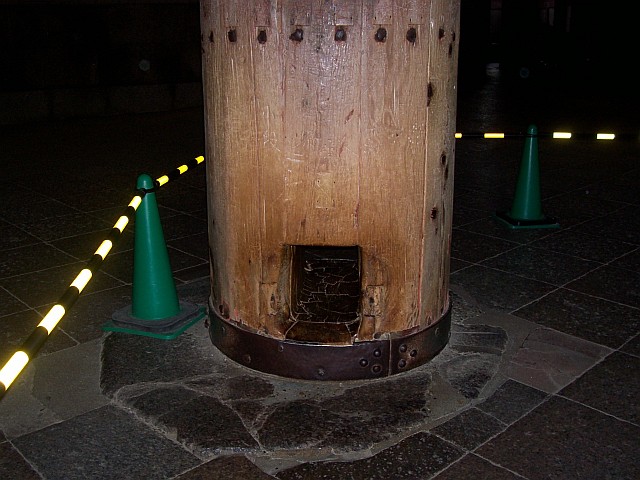
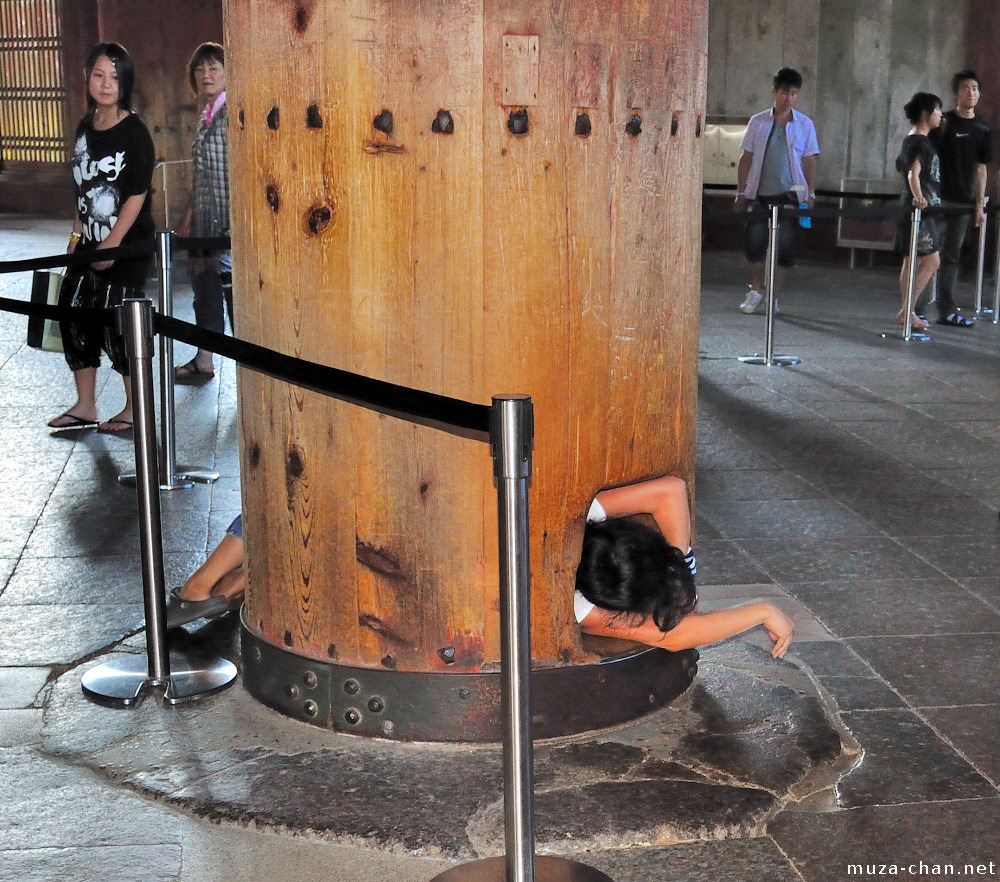
Although just two thirds of its original size, the main hall, Daibatsuden (Big Buddha Hall) is still the world’s largest wooden building. This gigantic building is home to Japan’s largest bronze Buddha statue.
New to the addition is Todaiji Museum, a one stop exhibition that showcases religious art and cultural treasures that speak of the history of this significant building.
Sri Dalada Maligawa in Sri Lanka
Temple of the Tooth Relic is considered the most sacred buddhist shrine in Sri Lanka. Not only is it venerated by Sri Lankan Buddhists, buddhists from all over the world are willing to travel great distances just to come here and offer their prayers.
This temple is built within the royal palace complex. It houses two of the remaining tooth relic of the buddha, which explained why it is the most reputable temples in Sri Lanka.
While the temple of the tooth relic may not resonate with tourists, some say that this is the heartbeat of the Kandy people, the place where the temple is situated.
4 Sacred Buddhist Mountains in China
Buddhism in China is the most popular and has its influence widespread in the whole of China for the past 2000 years. The different geographic areas and native languages also see a split in Buddhism – Han (Chinese) Buddism, Tibetan Buddhism and Theravada Buddhism. Of the temples for Han Buddhism, there’re four that stood out. They colloquially known as the four sacred Buddhist Mountains
1. Mt. Putuo
Image credits: http://bit.ly/1j9oGSm
Although Mt. Putuo is just a small part of the Zhoushan Island, it is home to three major temples: Puji that houses the oldest structure of Duobao Pagoda from Yuan Dynasty, Fayu with a stone stele from Wanli’s reign and Huiji.
2. Mt Wutai
Mt. Wutai is one of the five pilgrimage sites of Buddhism in the world. The other four sites are Nepal’s Lumbini and India’s Kushinagara, Mrgadava and Buddhagaya
Mt. Wutai has under its umbrella, holds more than 50 temples. Some of the famous ones are Xiantong Temple, Tayuan Temple and Pusading Temple.
3. Mt Emei
This is where the largest stone-carved Buddha in the world, earning its rights to become one of the UNESCO World Natural and Cultural Heritage Site.
There are more than 30 temples Mt. Emei, with some of the famous ones include the oldest and well-preserved temples, Baoguo Temple and Wannian Temple, the temple that is recorded to survive 18 earthquakes over 400 years.
4. Mt Jiuhua
Named as the most famous mountain in Southeast China, Mt. Jiuhua has beautiful valleys, steams and waterfalls. The place itself is shaped like a lotus flower and is noted to have over 70 peaks, with half of them exceeding the height of 1000 metres, the highest being 1,342 metres.
The oldest and most prominent temple in Mt. Jiuhua is probably the Huacheng temple. This temple is built on steep cliff, much like a local residence house.
